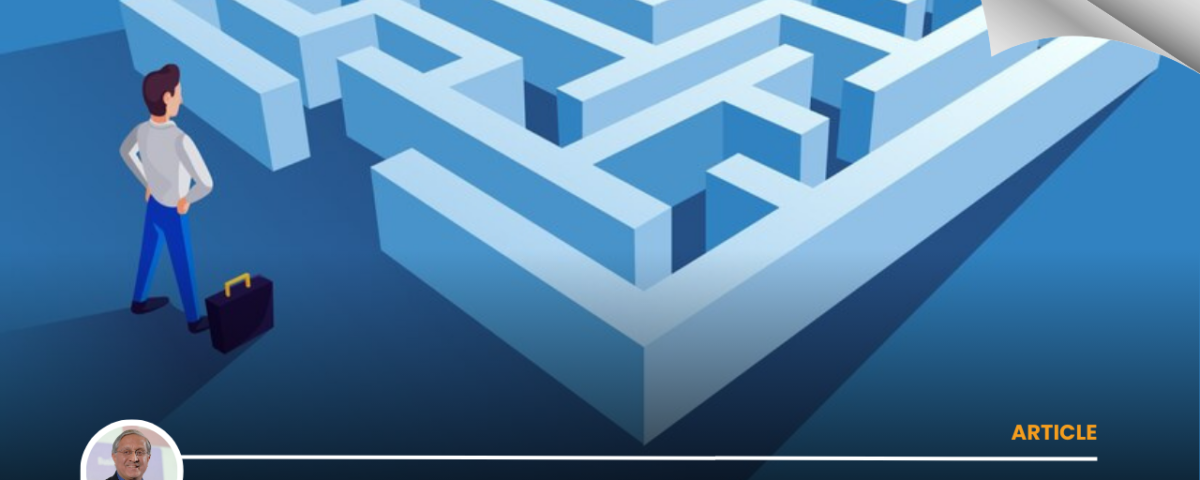By R. Gopalakrishnan and Sushmita Srivastava*
(rgopal@themindworks.me; sushmita.srivastava@spjimr.org)
*(R. Gopalakrishnan is an author and corporate advisor. He had served as Director, Tata Sons and, before that, as Vice Chairman, Hindustan Unilever. Dr Sushmita Srivastava is Associate Professor, People & Performance, at SPJIMR, Mumbai. Together, they have authored the book ‘How Kiran Mazumdar-Shaw fermented Biocon”, published by Rupa.)
On 10th August and 9th September respectively in New Indian Express, we covered what business institutions are and a first practice in institution building: people power. We now describe the second practice of institution building called ‘critical thinking’. Critical thinking contributes to organizational resilience and agility by compelling managements to challenge existing reality and thinking of new ones. What is critical thinking?
It is about developing unusual scenarios for problem solving by thinking up of not-so-obvious options; most would gravitate to the obvious options. Leaders think critically by reflecting on the context of an issue rather than only analysing the issue. Consider this example of how Biocon pivoted its technology.
After ten years of Biocon’s existence, Kiran Mazumdar-Shaw reflected about growth options. The company had begun with a conventional technology (called solid state), which suited local conditions of water and power availability. An alternative was sophisticated (called deep tank). Biocon’s leadership team faced this choice one decade after starting. Should the company be a big fish in a small pond (solid state) or be a small fish in a big pond (deep tank)?
Deep tank would require new skills, but could facilitate entry into the much bigger biopharma market. Biocon’s ten-year association with Unilever had transformed the management mind-set from a lenient enzyme business to a quality-driven pharma business. Kiran took a dramatic decision in 2006: to sell the company’s foundational enzyme business to a top-class Danish company, Novozyme—which still operates the technology perfected by Biocon. Biocon embarked on the risky journey of biopharmaceuticals, a bit like a bird moulting its skin and then flying into the skies with a new skin.
Kiran wanted to fight cancer through breakthrough drugs based on monoclonal antibodies (MAB), but the technology was closely guarded by the Americans. An opportunity arose after she met a scientist from the Department of Molecular Biology of Cuba at a conference. Most would have ignored technology from Cuba, a country not known for pharmaceutical innovation. Kiran visited the Cuban laboratory. The Cubans expressed great interest to enhance the value of their MAB technology. Biocon signed an agreement and, over the next decade, produced many novel drugs. When Biocon embarked on the capital-intensive biopharma business, Kiran chose the model of business partnerships, whereby Biocon tapered the risks and enhanced the rewards. The focus on ‘value’ over ‘volume’ was another conscious choice that Biocon made. This critical thinking mindset, so characteristic of Biocon, was visible in the other companies that the SPJIRM team researched and wrote books about.
In 1978, Tata Sons formed a JV with Burroughs, USA. F C Kohli, the then CEO had two choices: either TCS could merge with MNC company Burroughs or it could develop as an independent start-up. FC Kohli decided that TCS should continue as a separate entity. In doing so, TCS had to learn to operate in a competitive environment, with freedom and creativity, and to work in foreign markets. The Burroughs arrangement had a clause which prevented TCS from seeking India-based clients. FC Kohli de-risked TCS by retaining key talent. His successor S. Ramadorai initiated a participative model of leadership and grew the company dramatically by embracing the challenge of Y2K.
At HDFC group, Deepak Parekh always had his ear to the ground. Around 2005, HDFC decided to issue foreign currency convertible bonds (FCCB) in Asia. It was a complex instrument. Pricing was crucial, based as it was on multiple variables like interest rate and foreign currency rates. The issue was global and pricing was influenced by judgment of US dollar and Japanese yen rates, the stock market sentiment, and the conversion price five years hence. Using critical thinking, the price of Rs 1399 was determined. Whereas others’ FCCBs had not been successful, HDFC became extremely successful.
Kotak Mahindra Bank successfully weathered the Asian Financial crisis in 1997. Out of the 4,000 non-bank financial services companies in India, only 20 survived, Kotak being one of them. Uday Kotak questioned every underlying assumption—a key trait of critical thinkers. While IDBI and IFCI were expanding their portfolios, Uday advised his team to do the opposite, just in case assumptions went wrong. This saved the Bank from a catastrophe. Uday Kotak admits that he wanted to scale up and expand, but was equally a cautious person about risk, reflecting qualities of a critical thinker. He shrank his capital lending base from Rs 1800 crores to Rs 800 Crores. Return of capital was more important than Return on capital.
Project Lakshya was started by Mr. AM Naik at L&T with a perspective plan for ten years. The top 300 people in the company had to decide ‘where does the company want to be in the future?’ Project Lakshya focused the energies of management on mega projects with a timeframe of 5 years. The vision for five years under Project Lakshya was broken into yearly targets and further to quarterly targets as an important exercise.
Critical thinking demands excellent listening skills and encouraging arguments. Inferences are drawn with inductive and deductive thinking with a long term perspective. It is about connecting the dots and constantly setting the contours of ones thought processes



